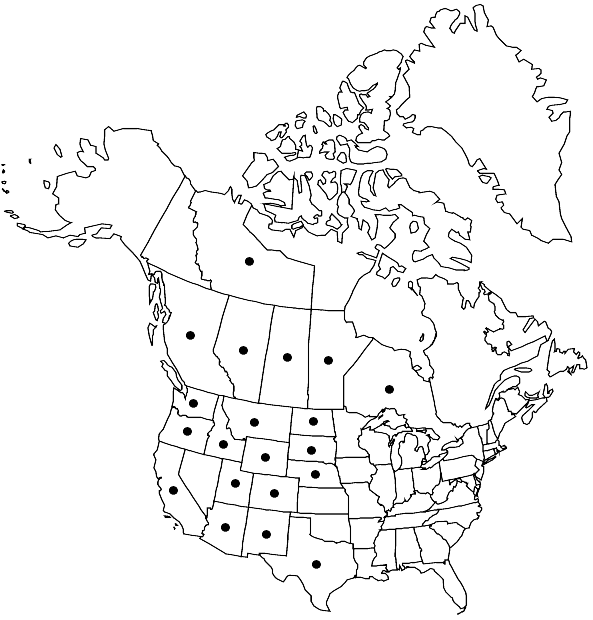Encalypta vulgaris
Sp. Musc. Frond., 60. 1801,.
Stems 5–20 mm, central strand small. Leaves broadly oblong to lingulate, 3–4 mm; apices broadly acute to obtuse, sometimes weakly cucullate or muticous; margins plane or weakly incurved; costa subpercurrent or percurrent, papillose; laminal cells 8–14 µm; basal-cells smooth. Specialized asexual reproduction absent. Seta 4–8 mm, yellowish red. Capsule exserted, erect, cylindric, 2–3.5 mm, weakly straight-furrowed, yellowish-brown, exothecial cells rectangular, walls weakly thickened; peristome absent or just a short hyaline membrane present; operculum 1.5 mm. Calyptra 4–5 mm, base not fringed, body smooth or papillose above or throughout. Spores 22–35 µm, warty, light-brown.
Habitat: Shallow calcareous soil over rock
Distribution

Alta., B.C., Man., N.W.T., Ont., Sask., Ariz., Calif., Colo., Idaho, Mont., Nebr., N.Mex., N.Dak., Oreg., S.Dak., Tex., Utah, Wash., Wyo., Mexico (Baja California), Central America, South America, Europe, Asia, Africa, Pacific Islands (New Zealand), Australia
Discussion
Encalypta vulgaris has at times been lumped with E. rhaptocarpa, and some “intermediate” specimens are difficult to place. The absence of a peristome, weakly furrowed capsule, and absence of an awn on vegetative leaves should be sufficient to identify most specimens. Furthermore, E. vulgaris is most frequently found in the western United States and western Mexico, while E. rhaptocarpa is more common throughout the north in Canada and Alaska.
Selected References
None.